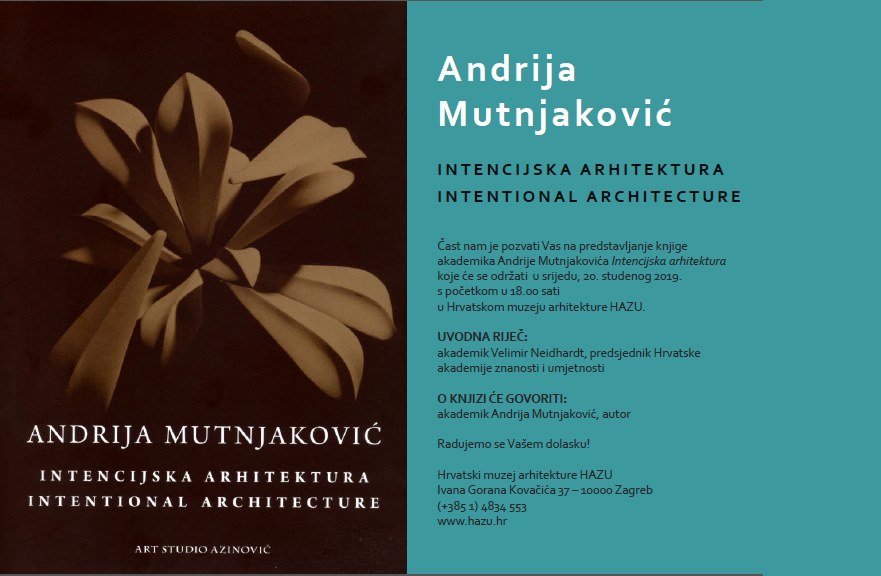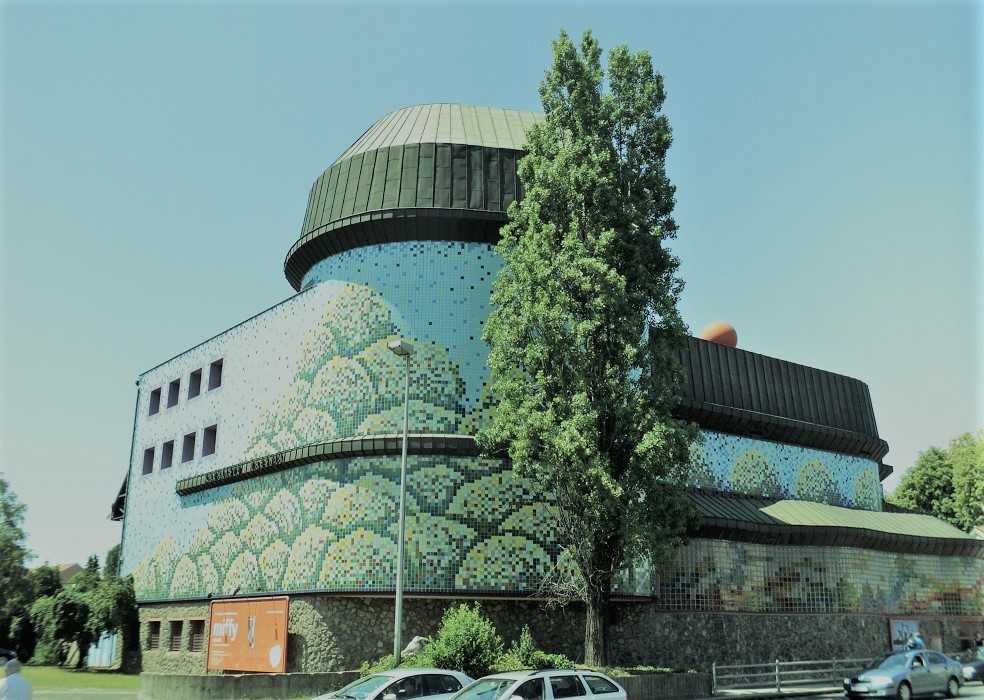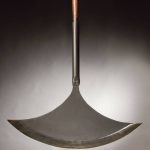Famous Croatian Architect Andrija Mutnjaković will soon be ninety years old, and he is celebrating his birthday on November 29th. He has also published a new book, “Intentional Architecture”, which will be presented tonight at the Croatian Museum of Architecture at HAZU (Croatian Academy of Sciences and Arts) in Zagreb.
“A little girl wanted to take cookies off of my Kazalište Trešnja. That was my biggest compliment,” he recalls to Patricia Kiš/JutarnjiList on November 20, 2019.
The Narodna i univerzitetska biblioteka Kosova in Pristina, the Kazalište Trešnja in Zagreb, and the Turističko naselje Duga uvala in Puli are among the most famous buildings he has designed during his long career. He taught along with Žuža Jelinek in the 1950s and 1960s at the Radničko sveučilište in Zagreb; she taught fashion, he lectured about housing.

Domobil and Architect Andrija Mutnjaković’s Book Event
The Flower
He worked with Alexander Srnec on the monument to Lenin in Belgrade, a project praised by Vera Horvat Pintarić. But he is most famous for his visionary, futuristic projects. Domobil, his most well-known, was a submission for an architectural competition in Hollywood. The project was conceived as a flower. The petals of this residential building open during the day and close by night, or when it rains.
This project also graces the cover of his new book. Why Domobil? “Because it was and remains my most famous project, which has been recognized as the most successful among the international public,” he replies. “For example, the Oxford Dictionary refers to this project as an example of kinetic architecture. I am the only Croatian architect mentioned along with Luciano Laurana, about whom I have written a book.”
“Recently, in September, I gave a postgraduate lecture at the University of Venice, where I spoke mostly about this project. Along with the lecture, I also wrote a text about why daisies are smarter than humans, to provoke the audience a little. The center of the daisy is life. Petals have nothing to do with life, they are simply a shroud which closes when it gets dark and when it rains. That’s exactly what I wanted to achieve with Domobil.”
Utopian Idea?
We ask our interlocutor whether this project, which was utopian at the time, could have been completed in the context of present-day architecture. “I don’t believe it was a utopian project at that time. It is a lightweight aluminum structure, like the wings of an airplane. I believed that it would be easier to build in Hollywood, where there are more people with financial resources, and that actors might have found this project attractive. At the time, they were making a lot of science-fiction films, and I believed that they would accept the project in this context as well,” he says.
Over time, he says, he has faced differing opinions regarding his architecture: “The students at Venice in my recent lecture were most impressed by Domobil. Some considered it utopian, though. I remembered one of my professors who, in commenting on my work, said to me: And an idle priest baptizes a flock. That is the principle behind my projects.” But that view is also supported by our most influential critic Vera Horvat Pintarić, and many others. “Yes, all of the art historians have supported me. But that was at a time when I hung out with actors and artists more frequently, they were more lifelike back then. When I started working there were only four architectural bureaus, and it was world of administrators. “
Have more people begun to engage in kinetic architecture over time? “Yes, over the past five or six years, ten books related to kinetic architecture have been published. In Croatian architecture, the first kinetic project had a roof which opened and closed and was designed by Josip Pičman in 1931. Even back then, they were thinking about kinetics. “
Secret to Croatian’s Stamina
To the question whether Pičman was one of his inspirations for pursuing a career in architecture, our interlocutor responds. “I was also inspired by another colleague. One day we found a book about El Lissitzky’s work at his father’s home. Osijek is city of town houses and there weren’t any major buildings. Flipping through the monographs, we marveled at human constructivism and magical design ideas. I was always interested in Konstantin Melnikov, and wrote an article about him recently, he had some amazing ideas,” Mutnjaković says.
So, soon he will be ninety years old. He speaks passionately about his new book, articles and his lecture in Italy. Is that why he’s so full of energy, because he’s been working in a profession which he has loved his entire life; is that his secret? “The secret is to drink brandy every night. Alcohol cleans out the fat, so I clean my veins every night.”
Mutnjaković’s library in Pristina was on display at MOMA’s New York exhibition about architecture of Yugoslav era, which was curated by Martino Stierli. Stierli, who is the Chief Curator of Architecture and Design at the famous American museum, has also been in Mutnjaković’s studio, which is filled with books. “He saw a photo of the Kazalište Trešnjevka and said it was the most interesting building he had seen in Zagreb,” he says.

The Kazalište Trešnja in Zagreb
The library once made the list of the ugliest buildings in the world, which was compiled by Centre Pompidou in Paris. On the other hand, at the 14th Venice Biennale, when the famous Rem Koolhaas was at the helm, they compiled about one hundred of the most important buildings over the past hundred years, each building representing one year. In 1982, his library was listed as the most important building. In any case, it is still one of the most controversial projects in Croatian architecture.
Information about Andrija Mutnjaković’s book launch on November 20, 2019 at HAZU in Zagreb can be found here.
To follow Croatian architecture and design news, check out our Made in Croatia page here and our Lifestyle page here.











